This post may contain affiliate links. For more information, read my disclosure policy.
Knowing how to measure flour seems like it should be obvious, but it’s not. Learn how to measure flour the right way so your recipes come out perfect every time!
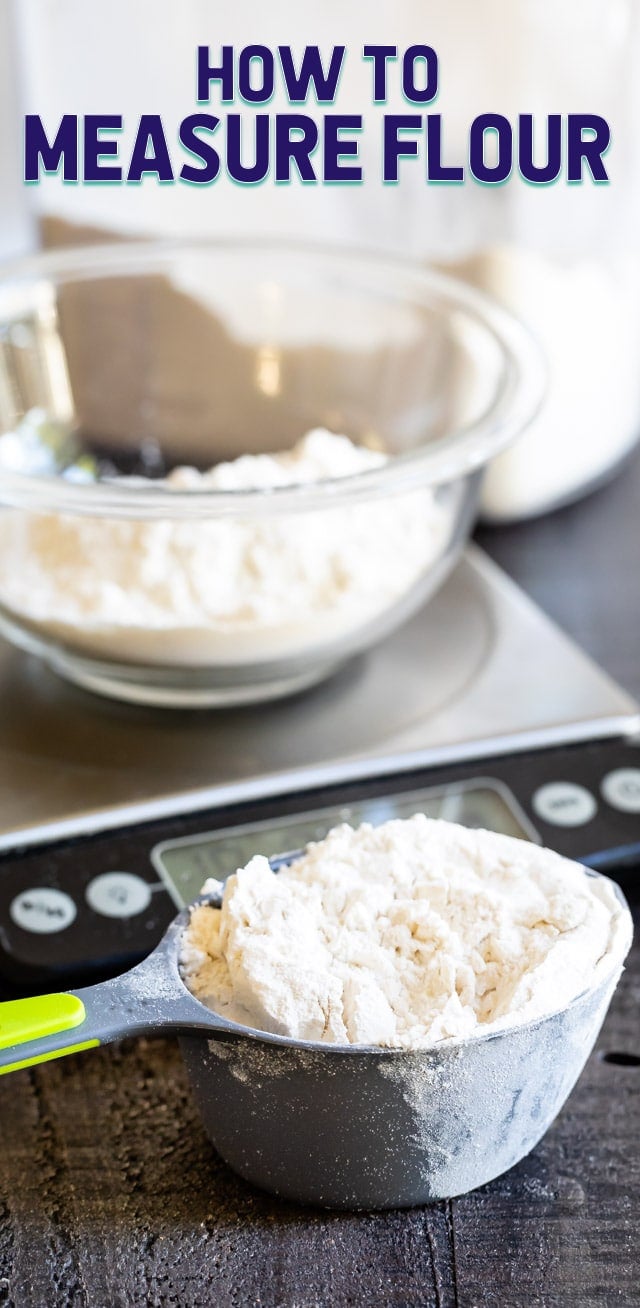
Table of Contents
Measuring Flour Video Tutorial
Why does how you measure flour matter?
I get comments on my dessert posts every day. Most comments are good, but some say that the recipe didn’t turn out. Whenever I get those comments I try to troubleshoot with the commenter because I want them to be able to enjoy the recipe as much as I did.
If you’re making a recipe and the batter ends up too crumbly and dry, chances are it’s because you aren’t measuring your flour correctly. You might be packing your flour (accidentally or unknowingly) and using too much, which results in a crumbly cookie dough.
If a cake falls or something ends up too dense, it could be how you’re measuring your flour, so knowing how to do it is very important.
How to measure flour without a scale
Ask yourself: are you SCOOPING or SPOONING your flour into the measuring cup?
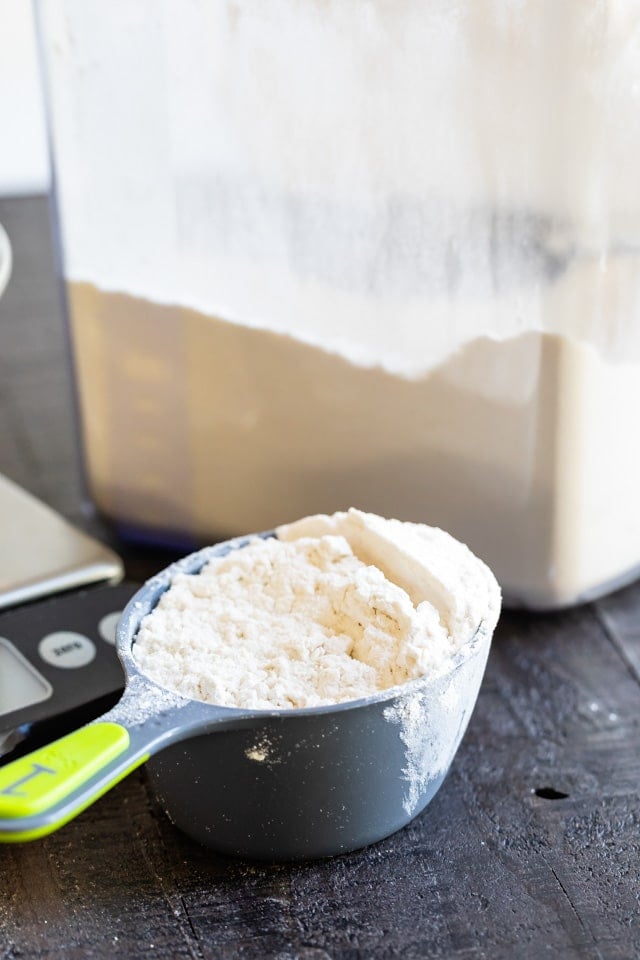
If you’re scooping the flour, you might be using too much!
How to measure flour
- First you should fluff up the flour. If you haven’t used it a lot or it’s a new package, the flour is probably packed into the container. Use a fork to stir and fluff the flour.
- SPOON the flour into the measuring cup. (Make sure you’re using a measuring cup for dry ingredients.)
- Scrape off any excess flour with a straight edge, like the back of a knife.
The rule of thumb when you’re measuring flour: fluff up the flour in the bin then SPOON the flour into the cup.
SPOON, don’t scoop. Let’s make a song!
SPOON don’t scoop. Just make that your baking mantra.
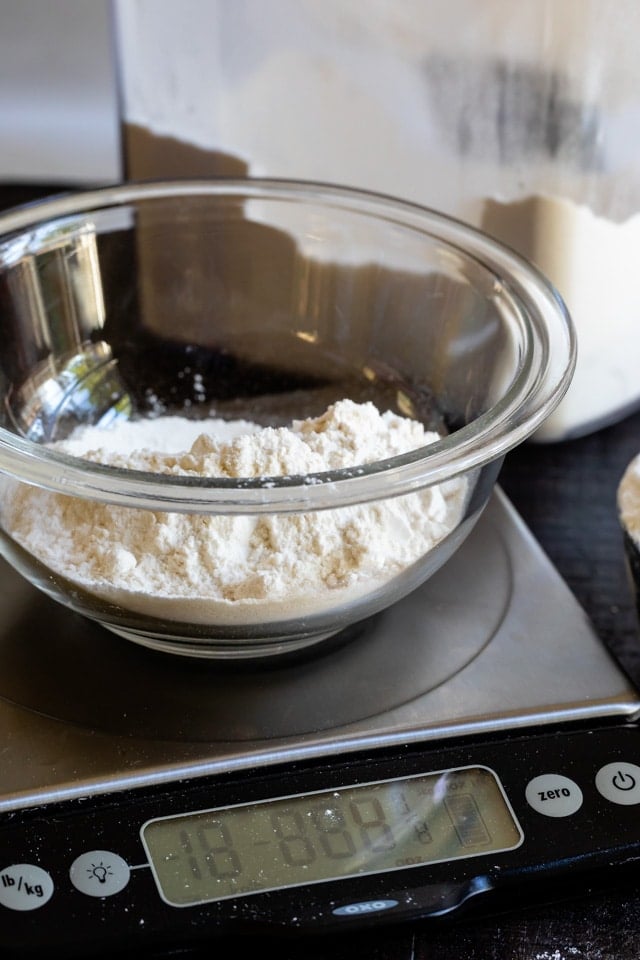
Use a scale to measure flour
The professional way to measure flour is to weigh it using a scale. It’s the most accurate way, although most regular people don’t weigh their ingredients. I don’t normally weigh my flour because my readers don’t; I need to measure and cook things the way you do so that my recipes are accurate.
If you want to test how much flour you’re spooning or scooping, weigh it on a kitchen scale to test yourself.
1 cup of all-purpose flour weights 124 grams.
Scoop then spoon your flour, weigh it, and do a test for yourself!
A scale is the best way to measure flour, especially if you don’t have a measuring cup.
Do you have to sift flour?
The short answer is no, however that comes with a big caveat. If a recipe calls for sifted flour then you need to use it. If the recipe doesn’t call for it then it’s fine if you don’t BUT, remember the steps above. You should always fluff up your flour before measuring it.
Measuring sifted flour
- To properly measure sifted flour you sift THEN spoon the flour into the measuring cup.
The most important tip about how to measure flour is that you:
Do not pack your flour – ever.
Spoon the flour, don’t pack it, measure it correctly, and your recipes will turn out!
Looking for the best kitchen scale or measuring cups? Here are my favorites:
- OXO Kitchen Scale
- Stainless Measuring Cup and spoon set (any measuring cups are fine, but test them: cheap/decorative versions might not be correct)
Learn how to measure flour the right way so that every recipe comes out perfect! This crucial baking tip shows you the proper way to measure flour without a scale (or with one) for baking.
Have you made this recipe?
Tag @crazyforcrust on Instagram or hashtag it #crazyforcrust
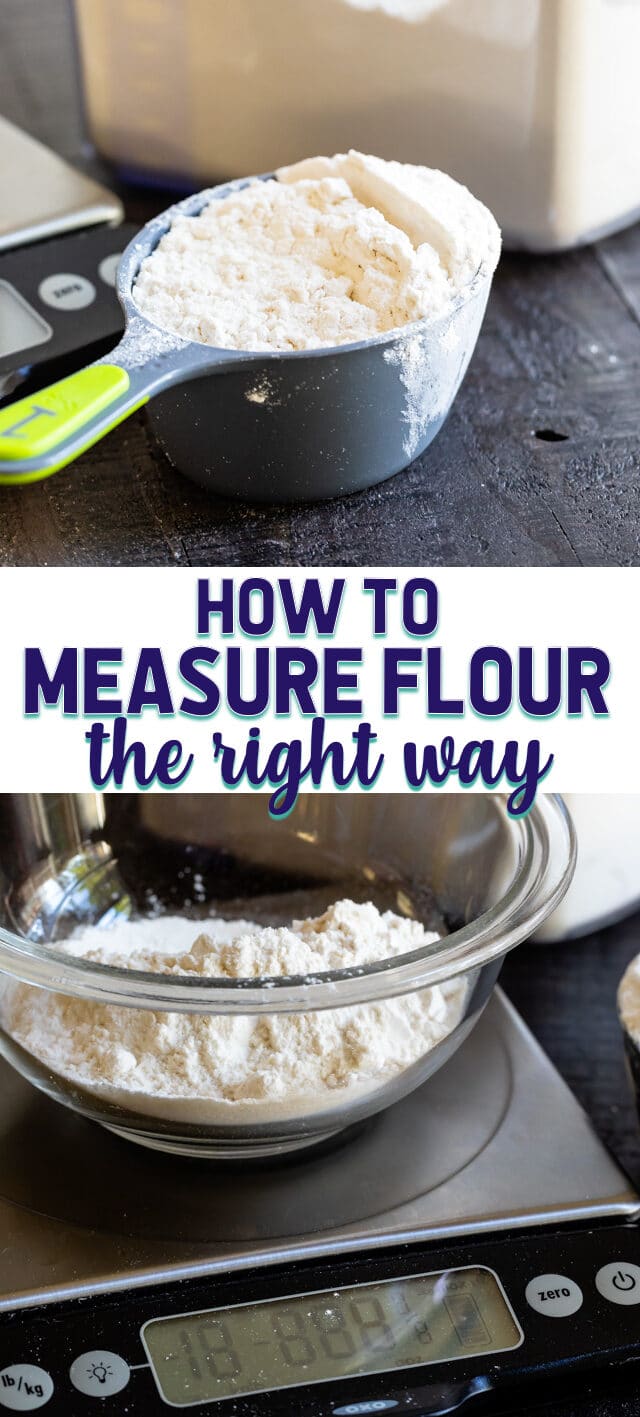
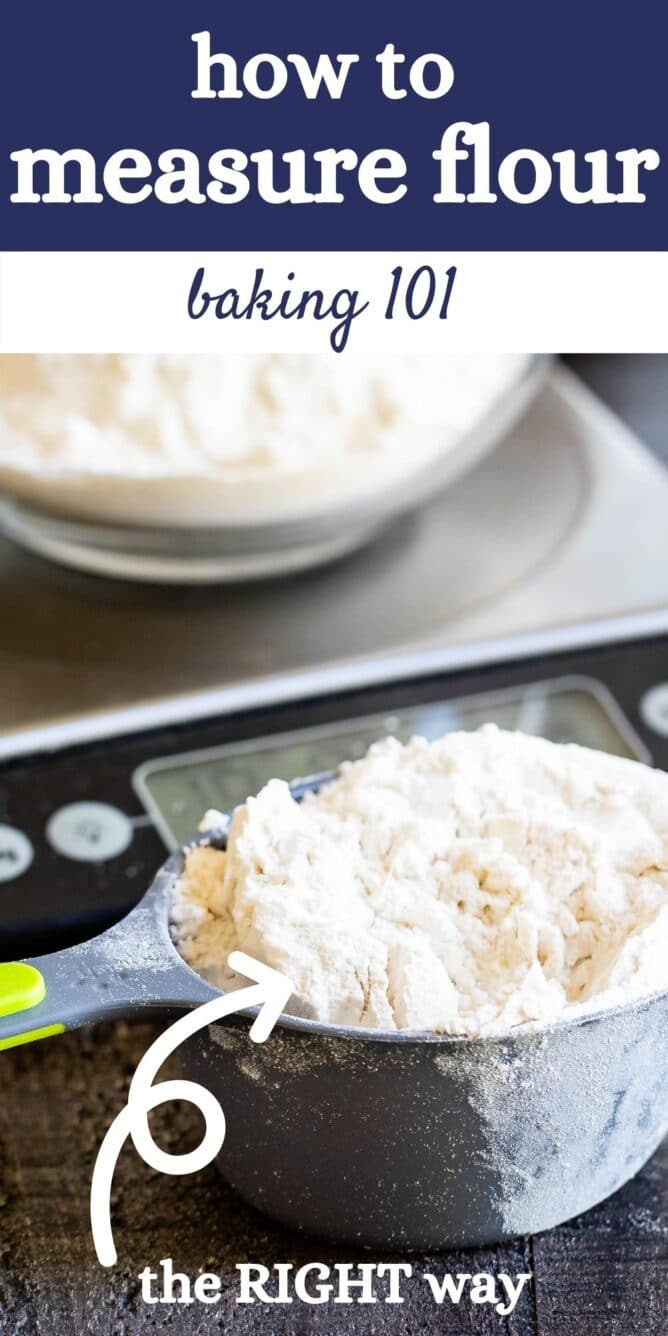
Can I use your caramel sauce recipe for ice cream, in the cookie recipes that call for caramel sauce, rather than using the caramel recipe that is in the cookie recipe? The cookie recipe calls for store bought caramel candies that is cooked with heavy cream.
Will the homemade caramel sauce survive being baked in the oven?
Thank you!
For ice cream yes. If you’re baking it in the middle of a cookie recipe (like a gooey bar or caramelita) then I suggest adding 1/4 cup flour to the caramel – that helps it not melt into the dough.
Well, I guess learning never ends! I’m 72, and just learned I’ve been measuring flour correctly just because it makes sense. I’m looking forward to the next tip!
Thanks for the quick reply. Here’s another: if I want to replace baking soda with baking powder in a c.c. cookie recipe, thinking powder helps PREVENT spread [I don’t know, just because] and knowing it is not 1:1, what is the general rule? I also know, being a know-it-all, that I’ll need more powder, thanks and enjoy today, Louis
Replacing baking soda with baking powder can be very tricky because they’re not the same thing, and they don’t act the same. It’s possible to use 2-3x more baking powder in a soda recipe, but results will be mixed depending on the recipe itself.
Baking soda is what gives the spread in cookies. Baking powder would give it a more cakey texture, which is why soda is normally called for. You’ll notice lots of cookie recipes that call for 1 teaspoon of baking soda, resulting in somewhat flatter cookies. That’s traditional, but in most of my cookie recipes you’ll notice I only add 1/2 teaspoon of baking soda. This results in a thicker, puffier cookie that’s still chewy and not cakey.
If you don’t have baking soda on hand and want cookies ASAP, you’ll have to google for some good recipes or exact substitutions. If at all possible, I’d use baking soda if it’s called for and not bother with the tinkering that is involved with substituting!
I use a 1/2 cup to spoon the flour into a 1cup measuring cup . Is that too much flour to spoon at a time?
No that’s perfect. Mainly, it’s just to make sure people aren’t packing it, and your method works!
By the way, we have the same scale you do (the one shown in the photo). I used it to test the difference between weighing and spooning 1 cup flour, and could not believe the difference. My spooned-in (non-fluffed-up) flour always weighs a few ounces more than the industry standard 4.25 oz.
Featured In